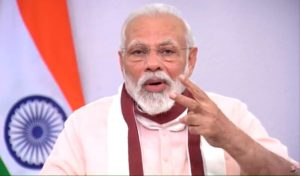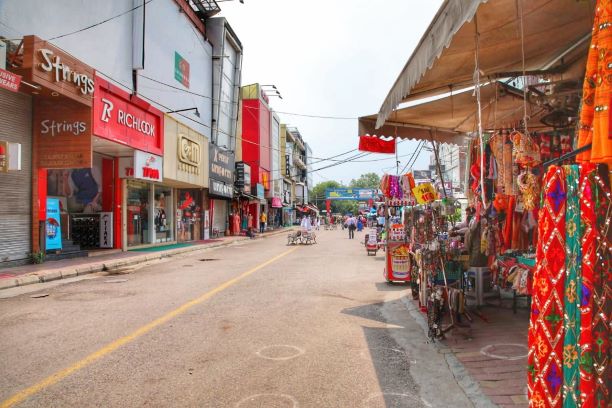RBI data on consumer confidence spells trouble for AatmaNirbhar Bharat

Two months after AtmaNirbhar Bharat launch, Prime Minister Narendra Modi said he saw green shoots of revival
Over three months of hyped up campaign about AatmaNirbhar Bharat and economic revival has failed to boost consumer morale as latest data from the Reserve Bank of India (RBI) shows.
It is now almost two months that Prime Minister Narendra Modi announced AatmaNirbhar Bharat (self-reliant India), his answer to the collapse of the Indian economy caused by a rushed, strictly enforced and prolonged lockdown in response to the coronavirus pandemic.
The Unique Selling Proposition of AatmaNirbhar Bharat was an economic package of INR 20 trillion, or close to 10 pc of the national GDP, to revive Indian economy which had been hit hard due to the sudden and extremely strict lockdown imposed across the country. The core of the package lay in helping companies access capital, an important barrier to a full-fledged economic revival. The package also included measures to promote innovation and research & development.
Since then, May 11 to be precise, practically the entire government machinery as well as its reliable business lobbies such as Confederation of Indian Industry and Federation of Indian Chambers of Commerce and Industry has been not only preaching AatmaNirbhar Bharat but breathing it as well.
In the following weeks, several other announcements were made, including fairly deep reforms in many areas such as agriculture and labour, with the intent of making it simpler for businesses to set up or shut down at will. Some of these reforms had been demanded by industry, Indian or foreign, for a long while and were welcomed accordingly.
Less than two months later, Modi himself announced that green shoots of revival of the economy were visible and painted a picture of quick return to rapid growth across multiple sectors, notably rural areas. Soon enough his entire cabinet, notably finance minister Nirmala Sitharaman, began to also see even more extensive green shoots in practically every single sector of the economy and all across the country.
The government’s narrative on a significant turnaround in the economy continued to gather pace throughout July and a large number of webinars and e-events all parroted the same lines and AatmaNirbhar Bharat had become the key buzzword for all.
However, all the talk of a nation or its economy being on a steroid-fed recovery failed to address many questions that have been staring the government and its mandarins in the face for a while. These deal with the actual situation on the ground and the measures that need to be taken to actually push the economy into the revival mode.
First concerns lockdown, the sole reason behind the economic disaster that India finds itself in today. Even though the central government says it has eased up lockdown since May 25, when first domestic flights were allowed to resume and industries, at a broad level, were permitted to restart. But the central government also asked the states to decide for themselves how to address the issue of lockdown and resumption of movement of people and goods freely. And here, there has been utter confusion right from the beginning.
Rules governing lockdown have varied sharply not only between states, but indeed in the same state on different dates and within a state also the rules can be dramatically different. With the number of infections as well as deaths rising sharply across the country, many chief ministers have resorted to entirely arbitrary decisions like locking down a state one or two days a week, often announcing a surprise lockdown just on the eve. These arbitrary moves spell trouble for economy as businesses like certainty and need to plan ahead for reviving their operations. However, all the plans are severely disrupted by the sudden or illogical lockdowns that have become the norm in the country.

When markets such as New Delhi’s Lajpat Nagar remain deserted even on weekends, it spells doom for economy (MIG photos)
As a result, supply chain for the industry remains severely disrupted as production facilities are spread in different parts of the same state or in different states and movement of personnel and goods is severely hampered. Another major reason behind the disrupted supply chains is the heavy dependence that Indian industry has on Chinese suppliers and with the rising tensions between the two Asian giants have created total uncertainty over bilateral trade.
In several sectors, notably tourism, hospitality as well as retail job losses have continued to mount even in areas where retail stores, malls, restaurants and hotels have been allowed to reopen. The situation of the construction industry is no better, not only due to disruption in supply chain but also because lack of availability of workers in many cities where the lockdown has continued.
In face of increasing number of these harsh realities from the ground, it is very difficult to understand exactly how and where the government can see the green shoots of revival. Unfortunately for the government, its ‘green shoots’ balloon was punctured by the Reserve Bank of India on August 6 when it released its consumer confidence report, perhaps the most important benchmark to gauge consumer behaviour.
The report says that the unprecedented slide in consumer confidence that began earlier this year has continued at the same even during the month of July. As a result, it hit the lowest ever level of 53.8 as Indian consumers become more pessimistic about their jobs, incomes and spending. “Consumer perception of the prevailing economic situation, employment scenario and own income was significantly lower than that in May,” the RBI said in the report. “Most respondents reported a reduction in discretionary spending” and didn’t expect to increase non-essential spending in the coming year as well, it said.
Notwithstanding all the hype around the so-called green shoots and AatmaNirbhar Bharat, consumer sentiment’s continued free fall is a clear reflection of the state of mind of an average Indian and the situation on the ground across the country rather than on the virtual business places or e-meeting platforms. The economy is far from any recovery as only demand on the ground will drive it further. As long as jobs don’t start coming back and companies don’t stop sacking or cutting salaries, Indian consumer can be expected to remain more cautious than ever.
The sheer distance that the government will have to go in boosting consumer confidence and reviving the economy becomes evident from the fact that the level of 100 on RBI’s index means consumer sentiment is neither positive nor negative about the future. Green shoots, even if there, clearly won’t do for the consumers, who need to see a flourishing forest in order to return to their spending habits.









